History

 With so many “normal” days, it’s nice, every once in a while, to have a day to be funny. April Fools’ Day is known for several things. Some people think of it as a day to point out the stupidity of other people, but I think that the pranks that go along with April Fools’ Day are just a great way to make people laugh…and let’s face it…we all need to laugh more. Sometimes we get so tied up in our busy little world, trying to get everything done that we need to get done in our busy day. To take a day “off” to be silly, seems so odd, and yet we can’t help ourselves. Pulling a prank is just so hard to resist.
With so many “normal” days, it’s nice, every once in a while, to have a day to be funny. April Fools’ Day is known for several things. Some people think of it as a day to point out the stupidity of other people, but I think that the pranks that go along with April Fools’ Day are just a great way to make people laugh…and let’s face it…we all need to laugh more. Sometimes we get so tied up in our busy little world, trying to get everything done that we need to get done in our busy day. To take a day “off” to be silly, seems so odd, and yet we can’t help ourselves. Pulling a prank is just so hard to resist.
Looking back on the years of my childhood, and all the fun we had on April Fools’ Day, I actually feel blessed 
 that we had been raised with a good sense of humor. I know that lots of people get angry about a prank played on them, but when you have grown up with the ability to take a joke, you find that you enjoy a good prank…as long as it’s in good clean fun and not to specifically hurt anyone. The jokes my parents played were of that caliber. We would do things like switch the salt for the sugar, a spider in your hair, or a rip in your jeans…not that the rip in the jeans prank would do any good these days. Some people go all out, like telling someone their car was stolen or placing a rubber snake in their bed. I’m sure some pranks can be a little over the top, and can even backfire on the prankster, but most are done good naturedly, and are taken as such. And then, there is always the best part, for the prankster…yelling “April Fools” to their victim.
that we had been raised with a good sense of humor. I know that lots of people get angry about a prank played on them, but when you have grown up with the ability to take a joke, you find that you enjoy a good prank…as long as it’s in good clean fun and not to specifically hurt anyone. The jokes my parents played were of that caliber. We would do things like switch the salt for the sugar, a spider in your hair, or a rip in your jeans…not that the rip in the jeans prank would do any good these days. Some people go all out, like telling someone their car was stolen or placing a rubber snake in their bed. I’m sure some pranks can be a little over the top, and can even backfire on the prankster, but most are done good naturedly, and are taken as such. And then, there is always the best part, for the prankster…yelling “April Fools” to their victim.


Lots of April Fools’ Day pranks don’t really fool anyone, but a good natured “victim” will usually pretend that they were fooled, so the prankster isn’t “bummed out” and that’s fun too. Sometimes it’s more fun to be the victim than it is to be the prankster…well, maybe not, but it’s usually just as much fun. Happy April Fools’ Day everyone. I hope you had at least one prank played on you, and I hope you got to play one on someone else too.

 Imagine knowing, all your life that you were destined to die for something you didn’t do…that you would actually be punished for a crime you did not commit. Over the years, there have been people who have had to do just that. Even the ones who have had to die, or even be incarcerated, for crimes they didn’t commit, were guilty of something. We all are. Let’s face it, we have all “sinned and come short of the Glory of God,” Romans 3:23. I’m not saying that those people who were wrongfully executed or incarcerated deserved to be there, I’m just saying that when it comes to sin, there is no such thing as innocence, except Jesus.
Imagine knowing, all your life that you were destined to die for something you didn’t do…that you would actually be punished for a crime you did not commit. Over the years, there have been people who have had to do just that. Even the ones who have had to die, or even be incarcerated, for crimes they didn’t commit, were guilty of something. We all are. Let’s face it, we have all “sinned and come short of the Glory of God,” Romans 3:23. I’m not saying that those people who were wrongfully executed or incarcerated deserved to be there, I’m just saying that when it comes to sin, there is no such thing as innocence, except Jesus.
So, when it comes right down to it, the only truly innocent person to be executed for something he didn’t do, was Jesus. The problem was that we owed a debt we couldn’t pay; Jesus paid a debt He didn’t owe; and with that, we received forgiveness we didn’t earn. All that took place on the day we now know as Good Friday, but the story didn’t end there. Unlike every other person who was executed, guilty or innocent, Jesus rose from the dead three days later. During those three days, he went to Hell and took back the “Keys of Death and Hell.” Satan no longer has power over us. We have power over him. We are not forced to live in bondage. The battle is the Lord’s, but the victory is ours…from that first Easter and for all eternity.


This is the real reason we celebrate Easter. Life as we know it would not exist if Jesus hadn’t paid that price for us. We were lost. It was all over. The wages of sin is death, and that price…death…had to be paid. So, Jesus made the ultimate sacrifice. I can’ thank Him enough…we can’t thank Him enough. How could we possibly? It will never be enough, but “all that I have is a heart singing Hallelujah!!” Thank you, Jesus!! Happy Resurrection Day everyone!!
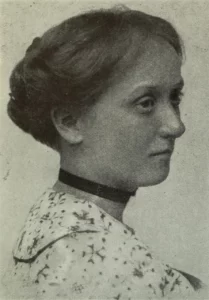
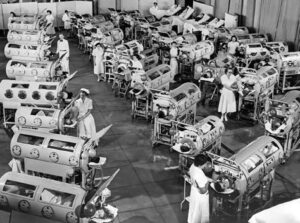 Most people have played the game, Candy Land, but I would wager that few people know much about its origins. As a matter of fact, I wonder if other games had reasons for their creation that are vastly different than what anyone would expect. Candy Land (also known as Candyland) is a simple racing board game created by Eleanor Abbott and published by Milton Bradley in 1948. The game is suitable for young children, because it requires no reading and minimal counting skills. It also doesn’t require any strategy skills, because players are never required to make choices…simply following directions is all that is required. It seems that the game has never lost its appeal, because about one million copies are sold each year.
Most people have played the game, Candy Land, but I would wager that few people know much about its origins. As a matter of fact, I wonder if other games had reasons for their creation that are vastly different than what anyone would expect. Candy Land (also known as Candyland) is a simple racing board game created by Eleanor Abbott and published by Milton Bradley in 1948. The game is suitable for young children, because it requires no reading and minimal counting skills. It also doesn’t require any strategy skills, because players are never required to make choices…simply following directions is all that is required. It seems that the game has never lost its appeal, because about one million copies are sold each year.
For most adults, the game loses its appeal pretty early on, and we all assume that it’s because it is a game that is designed for kids. We figure that once we get a little older, we simply move on to more complicated games to find any interest in them at all. And maybe that is true, but even that idea doesn’t touch on the real “idea” behind the game.
The truth is that when she invented the game, Eleanor Abbott was recovering from polio in San Diego, California. She began to think of things that she and other recovering polio victims could do in their limited capacity. So, the game was made for and tested by the children in the same wards on the hospital. It was supposed to be a sort of occupational therapy game, but when they played it, the children suggested that Abbott submit the game to Milton Bradley Company. They knew that they enjoyed it, and thought all children would, not just those who had been ill with polio. Apparently, Milton Bradley agreed, because the bought it and first published it in 1949. It was intended to be a temporary fill-in for their, then main product line, school supplies. Surprisingly, Candy Land became Milton Bradley’s best-selling game, surpassing its previous top seller, Uncle Wiggily. It put Milton Bradley in the same league as its main competitor, Parker Brothers. It is said that 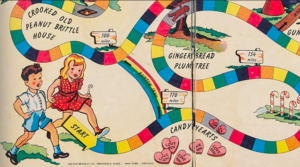
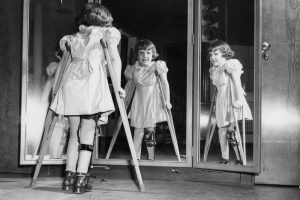 the original art was designed by Abbott, but this is uncertain. The original purpose of the game was to give kids stuck in polio wards a way to vicariously move freely in the pursuit of delights. The original board featured a boy in a leg brace about to walk through starting gate of the game. Interesting!!
the original art was designed by Abbott, but this is uncertain. The original purpose of the game was to give kids stuck in polio wards a way to vicariously move freely in the pursuit of delights. The original board featured a boy in a leg brace about to walk through starting gate of the game. Interesting!!

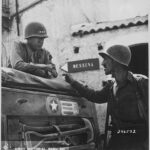 In any job, there can be personality conflicts, and Lieutenant General George S Patton was not liked by every other officer he served with. Nevertheless, like him or not, Lieutenant General George S Patton’s 3rd Army was successful is battle. On March 22, 1945, soldiers of the United States’ Third Army, under the command of Lieutenant General George S Patton, crossed the Rhine River at Oppenheim, south of Mainz. Patton’s arrival was weeks ahead of his rival, British Field Marshal Bernard Law Montgomery. When Patton went to battle, he was known to fight his own higher command structure nearly as hard as he did the Germans. His comments were often harsh and probably ruffled some feathers, but he was known to get the job done. He was also known for moving farther and more aggressively than ordered, and even having his troops pose as First Army soldiers in order to steal fuel from that unit’s stores in order to maintain their own advance to the east. By March 29, Patton had captured Frankfurt. Then Patton, commonly called “Old Blood and Guts” continued his march east.
In any job, there can be personality conflicts, and Lieutenant General George S Patton was not liked by every other officer he served with. Nevertheless, like him or not, Lieutenant General George S Patton’s 3rd Army was successful is battle. On March 22, 1945, soldiers of the United States’ Third Army, under the command of Lieutenant General George S Patton, crossed the Rhine River at Oppenheim, south of Mainz. Patton’s arrival was weeks ahead of his rival, British Field Marshal Bernard Law Montgomery. When Patton went to battle, he was known to fight his own higher command structure nearly as hard as he did the Germans. His comments were often harsh and probably ruffled some feathers, but he was known to get the job done. He was also known for moving farther and more aggressively than ordered, and even having his troops pose as First Army soldiers in order to steal fuel from that unit’s stores in order to maintain their own advance to the east. By March 29, Patton had captured Frankfurt. Then Patton, commonly called “Old Blood and Guts” continued his march east.
Frankfurt am Main, which means “On the Main” River, in western Germany, was the mid-19th century capital of Germany, until it was annexed by Prussia in 1866, in a move that ended its status as a free city, and thereby ending its reign as capital. When Germany was integrated into a united German nation, Frankfurt developed into a significant industrial city, making it a prime target for Allied bombing during the war. Bombing began in July of 1941, during a series of British air raids against the Nazis. By March of 1944, Frankfurt suffered major damage during a raid in which 27,000 tons of bombs were dropped on the nation in a single month. As a result, Frankfurt’s medieval Old Town was virtually destroyed.
Like him or not, Patton was a capable warrior. During the Battle of the Bulge, in December of 1944, General Patton broke through the German lines of the besieged Belgian city of Bastogne. The brave defenders of that city were so thankful for the assistance. Patton continued to push the Germans to the east, heading for his goal…to cross the Rhine. He was so determined that he didn’t care if he had to take down every single bridge along the route, in order to achieve his objective. Upon his arrival, Patton found one bridge…the Ludendorff Bridge, located in the little town of Remagen had not been destroyed. The American troops had already made a crossing on March 7, 1945, in a single great moment in the war and in history. Historically, no enemy army had crossed the Rhine since Napoleon accomplished the feat in 1805. Now there were two. The March 7th crossing and Patton’s grand crossing on March 22nd, and from the bridgehead created there, “Old Blood and Guts” and h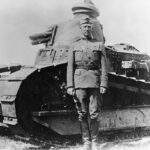
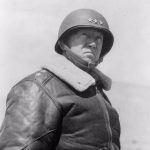 is 3rd Army headed east and captured Frankfurt on March 29, 1945.
is 3rd Army headed east and captured Frankfurt on March 29, 1945.
Still, Patton didn’t stop there. He crossed through southern Germany and into Czechoslovakia, at which point, he was given an order not to take Prague, the capital. It was to be saved for the Soviets to take. After all that, you might expect Patton to be furious, but uncharacteristically, he was not. Nevertheless, Patton desperately wanted to liberate Prague, probably for political, as well as personal reasons. Patton was a great warrior, but he was not above wanting the headlines.

 As is the case with many chemicals, Radium started out as a supposedly harmless chemical, that would later prove to be horrifically dangerous and even deadly. In the early 1920s, a company called U.S. Radium Corp was hiring girls to paint watch faces with radium. It was considered a “plum new gig” because the work was easy, and it paid well for the times. The purpose of painting the watch faces was to make them glow, which the chemical Radium did quite well. No one thought about exposure to Radium might do to the people doing this work. I’m sure it was like the exposure to lead in paint.
As is the case with many chemicals, Radium started out as a supposedly harmless chemical, that would later prove to be horrifically dangerous and even deadly. In the early 1920s, a company called U.S. Radium Corp was hiring girls to paint watch faces with radium. It was considered a “plum new gig” because the work was easy, and it paid well for the times. The purpose of painting the watch faces was to make them glow, which the chemical Radium did quite well. No one thought about exposure to Radium might do to the people doing this work. I’m sure it was like the exposure to lead in paint.
In the end, the easy work came at terrible price. As the girls worked on the watch faces, they licked their paint brushes in between watches. This was to give the brush a sharper point. Each time they did this, they swallowed a tiny bit of the chemical. I can’t say that I would be inclined to lick the tip of a paintbrush, but at that time, no one gave it a second thought. To them, it made sense to get the best point on their brush, and thereby, do the best job on the face of the watch.
At first, everything was going along well. The girls made good money, and the glow in the dark watches were a big hit. Still, as often happens with dangerous chemicals, the side effects began to present themselves in the form of horrifying health conditions. “There was one woman who the dentist went to pull a tooth and he pulled her entire jaw out when he did it,” explained Deborah Blum, author of The Poisoner’s Handbook. “Their legs broke underneath them. Their spines collapsed.” Unfortunately, many of the so-called Radium Girls died young, and U.S. Radium Corp tried to dodge responsibility.
The U.S. Radium Corp was founded in 1914 in New York City, by Dr Sabin Arnold von Sochocky and Dr George S Willis, as the Radium Luminous Material Corporation. In essence, the company produced uranium from carnotite ore. Eventually, they moved into the business of producing radioluminescent paint, and then to the application of that paint. As the business grew, they opened facilities in Newark, Jersey City, and Orange. In August 1921, in a hostile action, von Sochocky was forced from the presidency, and the company was renamed the United States Radium Corporation, Arthur Roeder became the president of the company. The company was 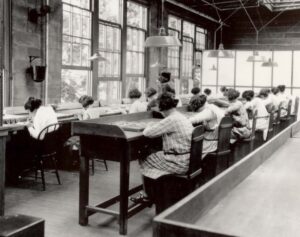
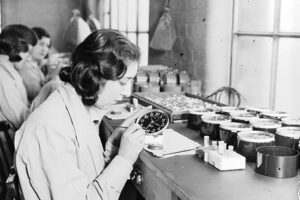 highly successful. In Orange, where radium was extracted from 1917 to 1926, the U.S. Radium facility processed half a ton of ore per day. The ore was obtained from “Undark mines” in Paradox Valley, Colorado and in Utah. Of course, these days, we know that uranium ore and most of its components are deadly, but back then, these innocent Radium Girls simply placed their trust in the wrong people, and it cost them their lives.
highly successful. In Orange, where radium was extracted from 1917 to 1926, the U.S. Radium facility processed half a ton of ore per day. The ore was obtained from “Undark mines” in Paradox Valley, Colorado and in Utah. Of course, these days, we know that uranium ore and most of its components are deadly, but back then, these innocent Radium Girls simply placed their trust in the wrong people, and it cost them their lives.
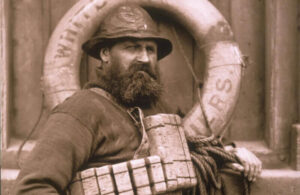
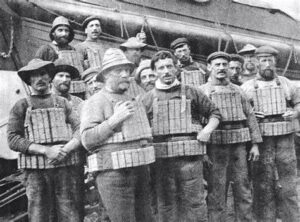 Like most safety equipment, people did not see the need for lifejackets until tragedy struck…at least not most people anyway. These days, we know that a personal flotation device (PFD…also referred to as a life jacket, life preserver, life belt, Mae West, life vest, life saver, cork jacket, buoyancy aid or flotation suit) is a flotation device in the form of a vest or suit that is worn by a user to prevent the wearer from drowning in a body of water. Most people know how important they are, but that doesn’t necessarily mean that most people use them. PFDs are known for keeping the wearer afloat with their head and mouth above the surface if they find themselves in the water due to a boating accident, or even a plane crash into water. People don’t have to know how to swim or tread water in order to stay afloat, and they can even be unconscious.
Like most safety equipment, people did not see the need for lifejackets until tragedy struck…at least not most people anyway. These days, we know that a personal flotation device (PFD…also referred to as a life jacket, life preserver, life belt, Mae West, life vest, life saver, cork jacket, buoyancy aid or flotation suit) is a flotation device in the form of a vest or suit that is worn by a user to prevent the wearer from drowning in a body of water. Most people know how important they are, but that doesn’t necessarily mean that most people use them. PFDs are known for keeping the wearer afloat with their head and mouth above the surface if they find themselves in the water due to a boating accident, or even a plane crash into water. People don’t have to know how to swim or tread water in order to stay afloat, and they can even be unconscious.
People have known for centuries that they needed such a device to ensure their safety when they are crossing deep streams and rivers. They created flotation devices out of inflated bladders, animal skins, or hollow sealed gourds to make for safer crossings. It is believed that Norwegian seamen created these first devices using blocks of wood or cork. Still not everyone paid attention to those who said they were important. The first known invention of a lifejacket came in 1854, when the Royal National Lifeboat Institution (RNLI) Inspector,  Captain Ward, broke new ground in lifesaving with his new design of cork lifejacket. During the 19th century, RNLI volunteers had to manually row their boats when launching to rescue in stormy seas. When the first lifejacket design was created, it therefore needed to be flexible enough to move with the men as they paddled.
Captain Ward, broke new ground in lifesaving with his new design of cork lifejacket. During the 19th century, RNLI volunteers had to manually row their boats when launching to rescue in stormy seas. When the first lifejacket design was created, it therefore needed to be flexible enough to move with the men as they paddled.
RNLI lifeboatman, Henry Freeman, worked in Whitby, Yorkshire, England. Freeman was a big proponent of the latest safety item, the cork lifejacket. He tried to get the other lifeboatmen to wear cork lifejackets, but they did not see the need, nor did they think the new cork lifejackets were such a great invention. Nevertheless, Freeman was so sure that he never went on a rescue without one. The on February 9, 1961, off the shores of Whitby, a huge storm developed. By 8:30am, the lifeboat crew had launched their first rescue, successfully saving the crew of the John and Ann. A short time later, they were called out again to assist a schooner, Gamma, who had run aground. After their second successful rescue, the crew celebrated with a glass of grog at the station. As the storm grew worse, and after several more rescues, Harbormaster Mr Tose and Coxswain John Storr decided that if more vessels came in, they simply could not respond. The lifeboat would be of little use at a high tide in such a storm. A short time later, the Flora and the Merchant were spotted in trouble. The Flora successfully made it into the harbor, but the Merchant ran ashore.
Although the Whitby crew had agreed not to respond, they just couldn’t stand by and watch the Merchant sink. As they maneuvered towards the stricken collier, the lifeboat was hit by a powerful wave that caught the stern of the lifeboat, capsizing it and throwing the crew overboard. The crowd onshore watched in horror as the crew 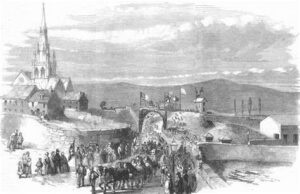
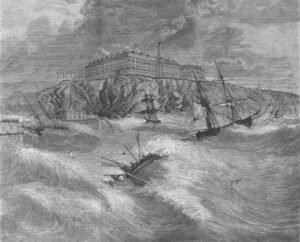 struggled in the raging sea. in the end, all of the lifeboat crew were lost, except for Henry Freeman, who survived due to the cork lifejacket he had insisted on wearing. Freeman was on his first call out. I’m sure that there were those in the crew who laughed at Freeman for wearing the lifejacket, thinking he was just being ridiculous, but as they were losing their lives, I’m sure they regretted their decision not to wear one too.
struggled in the raging sea. in the end, all of the lifeboat crew were lost, except for Henry Freeman, who survived due to the cork lifejacket he had insisted on wearing. Freeman was on his first call out. I’m sure that there were those in the crew who laughed at Freeman for wearing the lifejacket, thinking he was just being ridiculous, but as they were losing their lives, I’m sure they regretted their decision not to wear one too.
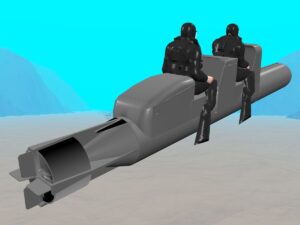 I am always amazed at some of the “latest and greatest” kinds of weapons that men have come up with to wreak havoc on their enemies. Of course, in a war, it is kill or be killed, so when you go into battle, you need the best weapons available. Still, some weapons are so strange that it is hard to imagine how they can work and how anyone would be willing to use them. Nevertheless, they do. On March 25, 1941, Italy attacked the British Fleet at Souda Bay, Crete. The strange part about this warhead (a torpedo) was that this was a “manned” torpedo. You might ask yourself how that could possibly be and how it could possibly work. We know what torpedoes are, but how can they possibly be manned? Nevertheless, they were.
I am always amazed at some of the “latest and greatest” kinds of weapons that men have come up with to wreak havoc on their enemies. Of course, in a war, it is kill or be killed, so when you go into battle, you need the best weapons available. Still, some weapons are so strange that it is hard to imagine how they can work and how anyone would be willing to use them. Nevertheless, they do. On March 25, 1941, Italy attacked the British Fleet at Souda Bay, Crete. The strange part about this warhead (a torpedo) was that this was a “manned” torpedo. You might ask yourself how that could possibly be and how it could possibly work. We know what torpedoes are, but how can they possibly be manned? Nevertheless, they were.
The attack of March 25, 1941, was the first time that manned torpedoes had been employed in naval warfare, and while it was strange, it added a new weapon to the world’s navies’ arsenals. Known as the “Chariot,” the weapon was definitely unique. It was mainly used to attack enemy ships that were still in the harbors. That makes sense, because the type of preparation necessary to run it would not be feasible in most settings. The Chariots needed “pilots” to “drive” them to their targets. Now, imagine having that be your job. We all know 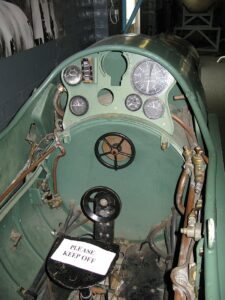 what torpedoes do, they are deployed and run straight to their target and explode on contact. So, what does a “manned” torpedo do? The same thing!! Technically, however, this is not a suicide mission for the pilot. The way it works is this. The pilot sits astride the torpedo on a vehicle that would transport them both to their target. The pilot would guide the missile as close to the target as possible, then he detached the vehicle and rode it back, usually to a submarine. The only major problem my mind can envision would be if the vehicle wouldn’t detach. The Chariot was an enormous tactical advantage, because before its development, the closest weapon to the Chariot was the Japanese Kaiten, which was a human torpedo, or suicide bomb, which had obvious drawbacks. Imagine being the “pilot” of that kind of torpedo. Obviously, it something malfunctioned, the “pilot” could end up dead, but with the Kaiten, something was going to go very wrong by definition.
what torpedoes do, they are deployed and run straight to their target and explode on contact. So, what does a “manned” torpedo do? The same thing!! Technically, however, this is not a suicide mission for the pilot. The way it works is this. The pilot sits astride the torpedo on a vehicle that would transport them both to their target. The pilot would guide the missile as close to the target as possible, then he detached the vehicle and rode it back, usually to a submarine. The only major problem my mind can envision would be if the vehicle wouldn’t detach. The Chariot was an enormous tactical advantage, because before its development, the closest weapon to the Chariot was the Japanese Kaiten, which was a human torpedo, or suicide bomb, which had obvious drawbacks. Imagine being the “pilot” of that kind of torpedo. Obviously, it something malfunctioned, the “pilot” could end up dead, but with the Kaiten, something was going to go very wrong by definition.
The first successful use of the Chariot was by the Italian navy was on March 26, when six Italian motorboats, commanded by Italian naval commander Lieutenant Luigi Faggioni, entered Souda Bay in Crete and planted their weapons along a British convoy in harbor there. The Italians referred to their version as Maiali, or “Pigs.” In the attack, the cruiser York was so severely damaged by the blast that it had to be beached. The manned torpedoes had proven to be the most effective weapon in the Italian naval arsenal. In December 1941, the Italian torpedoes were successfully used against the British at Alexandria, Egypt. Malian torpedoes also sank the British battleships Queen Elizabeth and Valiant, as well as one tanker. They were used against merchant ships at Gibraltar and elsewhere.
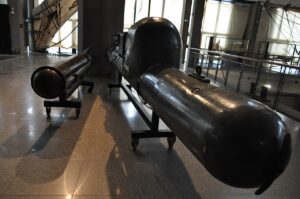
The British did get even with the Italians by sinking the new Italian cruiser Ulpio Traiano in the port of Palermo, Sicily, in early January 1943. An 8,500-ton ocean liner was also damaged in the same attack. After the Italian surrender, Britain, and later Germany, continued to use the manned torpedo. It is such a strange weapon, and I can’t imagine how the “pilots” felt about the risks involved with it. Nevertheless, it was successful. Germany succeeded in sinking two British minesweepers off Normandy Beach in July 1944, using their Neger torpedoes, which was basically the same thing.
 In areas of the country that are more rural, most everyone has their own car, and while we have bus systems, the majority of people drive themselves to do their errands and such. In large metropolis places, like New York City, however, where parking is hard to find, and costs a fortune, many people choose not to own a vehicle. That said, getting around there is not as easy as it is for those of us who simply go out and get in our car, and drive away. For New York City the best solution was to build a subway. As most people know, a subway is a rapid transit system. The one in New York City serves four of the five boroughs of New York City, including the Bronx, Brooklyn, Manhattan, and Queens. The subway is operated by is the New York City Transit Authority (NYCTA), which is controlled by the Metropolitan Transportation Authority (MTA) of New York. In 2016 alone, an average of 5.66 million passengers used the system every day, making it the busiest rapid transit system in the United States and the seventh busiest in the world.
In areas of the country that are more rural, most everyone has their own car, and while we have bus systems, the majority of people drive themselves to do their errands and such. In large metropolis places, like New York City, however, where parking is hard to find, and costs a fortune, many people choose not to own a vehicle. That said, getting around there is not as easy as it is for those of us who simply go out and get in our car, and drive away. For New York City the best solution was to build a subway. As most people know, a subway is a rapid transit system. The one in New York City serves four of the five boroughs of New York City, including the Bronx, Brooklyn, Manhattan, and Queens. The subway is operated by is the New York City Transit Authority (NYCTA), which is controlled by the Metropolitan Transportation Authority (MTA) of New York. In 2016 alone, an average of 5.66 million passengers used the system every day, making it the busiest rapid transit system in the United States and the seventh busiest in the world.
As New York City grew (it currently has 10 times the amount of people as Wyoming – the smallest state by population), it became obvious that there was going to have to be a public transport system. Work began on  the New York Subway on March 24, 1900, and the first underground line opened on October 27, 1904. The opening of the subway was almost 35 years after the opening of the first elevated line in New York City, which became the IRT Ninth Avenue Line. By the time the first subway opened, the two elevated lines had been consolidated into two privately owned systems, the Brooklyn Rapid Transit Company (BRT, later Brooklyn–Manhattan Transit Corporation, BMT) and the Interborough Rapid Transit Company (IRT). All lines built for the IRT and most lines for the BRT were built by the city and leased to the companies after 1913. When the first line of the city-owned and operated Independent Subway System (IND) opened in 1932, it was intended to compete with the private systems and replace some of the elevated railways. The problem was that it was required to be run “at cost,” By necessity, the fares were up to double the five-cent fare, that was popular at the time…thereby, completely defeating the intended purpose.
the New York Subway on March 24, 1900, and the first underground line opened on October 27, 1904. The opening of the subway was almost 35 years after the opening of the first elevated line in New York City, which became the IRT Ninth Avenue Line. By the time the first subway opened, the two elevated lines had been consolidated into two privately owned systems, the Brooklyn Rapid Transit Company (BRT, later Brooklyn–Manhattan Transit Corporation, BMT) and the Interborough Rapid Transit Company (IRT). All lines built for the IRT and most lines for the BRT were built by the city and leased to the companies after 1913. When the first line of the city-owned and operated Independent Subway System (IND) opened in 1932, it was intended to compete with the private systems and replace some of the elevated railways. The problem was that it was required to be run “at cost,” By necessity, the fares were up to double the five-cent fare, that was popular at the time…thereby, completely defeating the intended purpose.
While the city tried to keep the elevated system running too, and succeeded to a degree, many were had to be closed, because it became too expensive to maintain them. Graffiti, crime, and dilapidation became common. The New York City Subway had to make many service cutbacks and defer necessary maintenance projects just to stay solvent. In the 1980s an $18 billion financing program for the rehabilitation of the subway began. Today, the subway systems remain an important part of the transport system, in New York City. They are also vulnerable to attack, as well as simple maintenance problems. The September 11 attacks prove this without question. The attacks resulted in service disruptions, particularly on the IRT Broadway–Seventh Avenue Line, which ran directly underneath the World Trade Center. Several sections were crushed, requiring suspension of  service on that line south of Chambers Street. Work began immediately to repair the damage, and by March 2002, seven of the closed stations had been rebuilt and reopened. All but one of them. Then, on September 15, 2002, that one also reopened with full service along the line. Since the 2000s, expansions include the 7 Subway Extension that opened in September 2015, and the Second Avenue Subway, the first phase of which opened on January 1, 2017. However, at the same time, under-investment in the subway system led to a transit crisis that peaked in 2017. Subways will most likely always be an important part of transportation, especially in big cities. Nevertheless, it will also always have its vulnerabilities.
service on that line south of Chambers Street. Work began immediately to repair the damage, and by March 2002, seven of the closed stations had been rebuilt and reopened. All but one of them. Then, on September 15, 2002, that one also reopened with full service along the line. Since the 2000s, expansions include the 7 Subway Extension that opened in September 2015, and the Second Avenue Subway, the first phase of which opened on January 1, 2017. However, at the same time, under-investment in the subway system led to a transit crisis that peaked in 2017. Subways will most likely always be an important part of transportation, especially in big cities. Nevertheless, it will also always have its vulnerabilities.

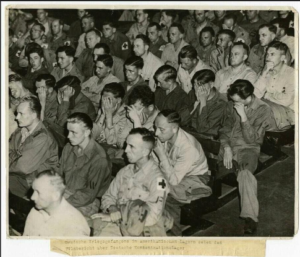 Adolf Hitler was quite possibly one of the most insane people of all time, but apparently much of the hateful things he did were actually done under the influence of Opioids and Meth. Does that excuse his behavior? Absolutely not. Even on opioids and meth, there was a monster that existed deep on the inside of that man. There was a deep-seated hatred that made him do the things he did. The opioids and meth merely gave him the ability to continue on in his hatred, and it wasn’t just Hitler that was regularly using these drugs to carry out their hateful tasks. It is common knowledge that many of the soldiers under Hitler either didn’t know the truth of everything that was going on, and still others were afraid to argue the point for fear of their own death. For many of those people, the use of drugs was the only escape from the horrors of what they had to do.
Adolf Hitler was quite possibly one of the most insane people of all time, but apparently much of the hateful things he did were actually done under the influence of Opioids and Meth. Does that excuse his behavior? Absolutely not. Even on opioids and meth, there was a monster that existed deep on the inside of that man. There was a deep-seated hatred that made him do the things he did. The opioids and meth merely gave him the ability to continue on in his hatred, and it wasn’t just Hitler that was regularly using these drugs to carry out their hateful tasks. It is common knowledge that many of the soldiers under Hitler either didn’t know the truth of everything that was going on, and still others were afraid to argue the point for fear of their own death. For many of those people, the use of drugs was the only escape from the horrors of what they had to do.
Still, there were many people who were truly evil, and it’s quite likely that those people simply used the drugs to “enhance” the horrific experience, and by enhance, I mean they very much enjoyed the killing and in their twisted minds, the use of the drugs made it more “pleasurable” to do the things they did. The drugs also kept the Nazis awake for many more hours than they might otherwise have been able to endure. The Nazi call was “Germany awake!” The orders were constantly barked out, and they meant it more than most people even knew. As Nazi Germany battled its way through World War II, the country relied on a little secret to stay “energetic.” It was known as Pervitin. It was used by the soldiers to avoid sleep and to numb the terror of battle. Housewives later popped Pervitin so they could “finish all their chores and lose weight” too. It turns out, however, that it was just pure methamphetamine. And Adolf Hitler himself relied on even stronger remedies, taking a drug called Eukodal, effectively a cocktail of oxycodone and cocaine, to treat various “ailments.”
By 1941, a top German health minister wrote a letter fretting that the entire nation was “becoming addicted to drugs” but it made little difference to Hitler or anyone else. Indeed, there remains a “trove of weird historical facts about drug use in Nazi Germany” that would totally astound even World War II buffs. We already knew that Hitler was evil and crazy, but now we know more about how he was able to keep going with all his hate. 
 For some or most of the soldiers, it was likely a way to control what they did. I’m sure a ‘mutiny” would have been catastrophic for Hitler’s master plan against the Jews. When some of those soldiers saw the atrocities that occurred, they actually wept. Many of them had no idea what was really going on…and I’m sure that was exactly what Hitler wanted.
For some or most of the soldiers, it was likely a way to control what they did. I’m sure a ‘mutiny” would have been catastrophic for Hitler’s master plan against the Jews. When some of those soldiers saw the atrocities that occurred, they actually wept. Many of them had no idea what was really going on…and I’m sure that was exactly what Hitler wanted.

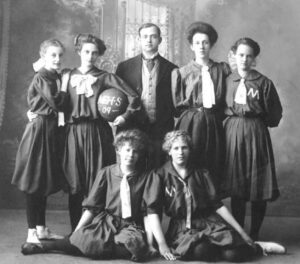 These days, women’s sports are as popular as men’s sports, but women’s sports have not always been a thing. In fact, until March 22, 1893, when the first women’s college basketball game was played at Smith College in Northampton, Massachusetts, there was no such thing…not in college anyway. There were women’s sports before that…even as far back as the 6th century, but they were not something that men watched. In 1893, the idea of men watching women play basketball was…unthinkable. These things were considered improper and leud. That all changed with the game at Smith College. In that game, each basket counted as one point and the game lasted two 15-minute halves. In the game, the sophomore class team prevailed over a freshmen team, 5-4. It must have been a great game, but men were still not permitted inside the gym at the all-women college. Still, it was women’s basketball, and a crowd of fascinated women cheered on their fellow classmates from the running track of the campus gymnasium. They were making history, and everyone was excited about it. The winning team was awarded a gold and white banner, but the bigger win that day was that collegiate history had been made, and women’s sports was now and forevermore a definite thing!!
These days, women’s sports are as popular as men’s sports, but women’s sports have not always been a thing. In fact, until March 22, 1893, when the first women’s college basketball game was played at Smith College in Northampton, Massachusetts, there was no such thing…not in college anyway. There were women’s sports before that…even as far back as the 6th century, but they were not something that men watched. In 1893, the idea of men watching women play basketball was…unthinkable. These things were considered improper and leud. That all changed with the game at Smith College. In that game, each basket counted as one point and the game lasted two 15-minute halves. In the game, the sophomore class team prevailed over a freshmen team, 5-4. It must have been a great game, but men were still not permitted inside the gym at the all-women college. Still, it was women’s basketball, and a crowd of fascinated women cheered on their fellow classmates from the running track of the campus gymnasium. They were making history, and everyone was excited about it. The winning team was awarded a gold and white banner, but the bigger win that day was that collegiate history had been made, and women’s sports was now and forevermore a definite thing!!
Women have participated in sports for many years, but it was never competitive, until that day. The “instigator” of the event was the college’s gymnastics instructor, Lithuanian immigrant Senda Berenson. Basketball hadn’t been around very long, in fact, it was just two short years since its invention by Dr James Naismith in late 1891. Berenson adapted the women’s rules from Naismith’s rules for men. Because of this adaptation, basketball became one of the rare sports that developed the male and female versions on a parallel timeline. We all know what basketball is like today. We have watched as the athletes jump up to “slam dunk” the ball into the soft net (made of synthetic fibers), grab the rim, and then let it go, making a bouncing ringing sound as it is released. The “basket” these days has an open bottom, making it not a true basket. The baskets of the past truly were a basket…usually a peach basket, with a closed bottom. The object of the game was to land a soccer ball into peach baskets suspended at opposite ends of a court.
The rules intentionally limit physical contact, but things don’t always go as planned. In that first competitive women’s game, a player on the freshmen team dislocated her shoulder at the beginning of the game, leaving her team a player down for the rest of the game. Versions of Berenson’s game quickly spread to other women’s 
 colleges throughout the country. Women’s competitive basketball was born. The first women’s intercollegiate game was between Stanford and Cal, and was played in 1896. Berenson, who died in 1954, was enshrined in the Naismith Basketball Hall of Fame as a contributor in 1985. She was inducted into the Women’s Basketball Hall of Fame in 1999.
colleges throughout the country. Women’s competitive basketball was born. The first women’s intercollegiate game was between Stanford and Cal, and was played in 1896. Berenson, who died in 1954, was enshrined in the Naismith Basketball Hall of Fame as a contributor in 1985. She was inducted into the Women’s Basketball Hall of Fame in 1999.

